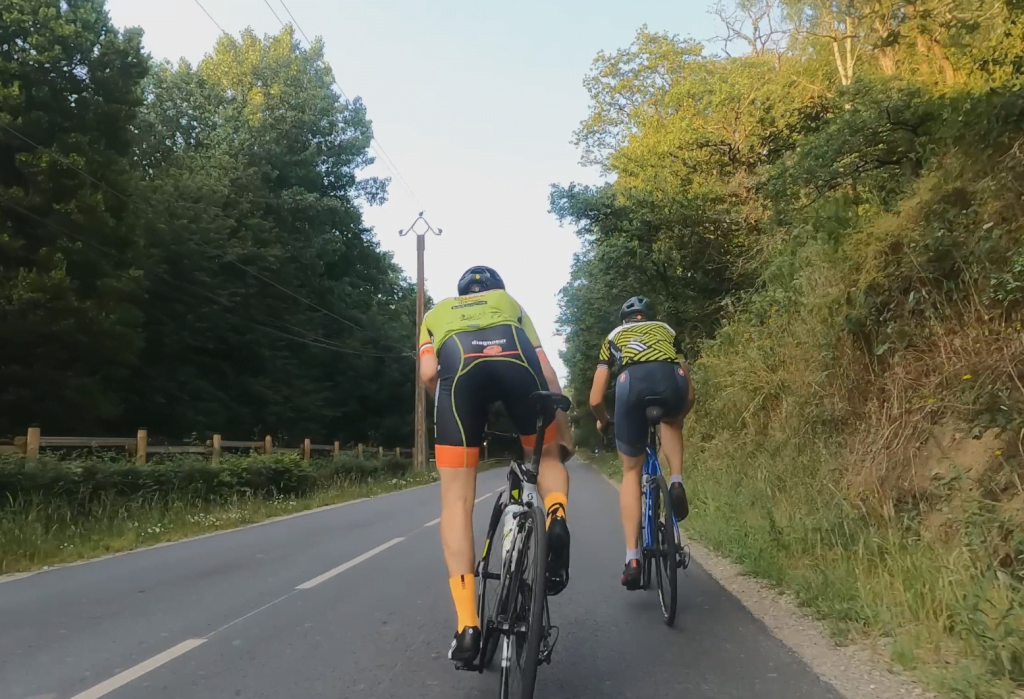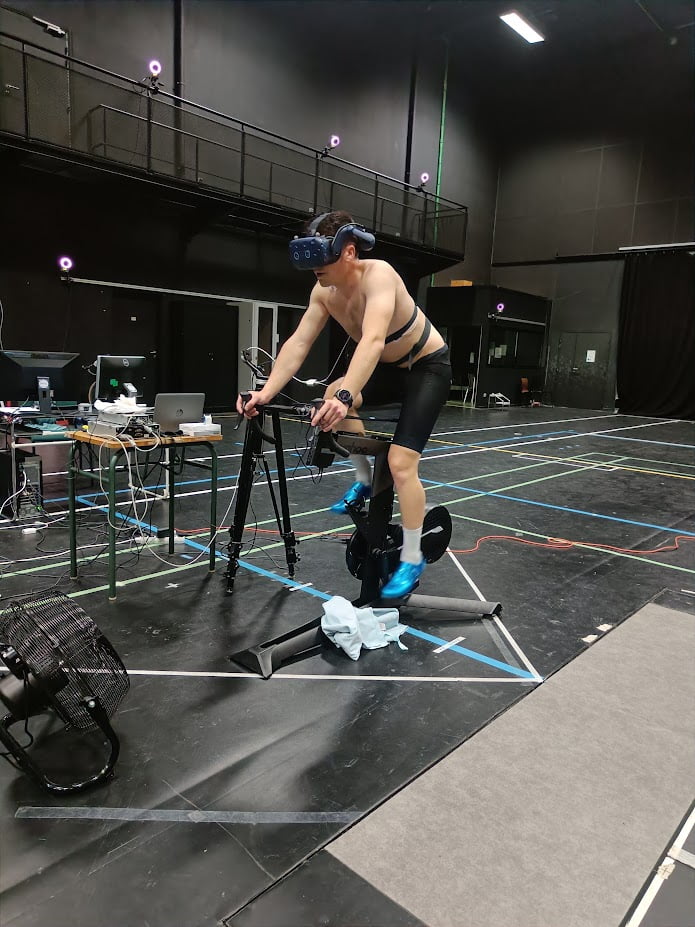SHARESPACE provides a unique experience in Shared Hybrid Space (SHS), mixing real and AI-driven users. This is an original and efficient mean to train people in complex coordination and synchronization tasks. In the specific case of sports training, this possibility to make real and virtual users collaborate opens new possibilities: manipulating multisensory feedback sent to the users, controlling the AI-driven users to facilitate or challenge the coordination tasks, and adapt the visual feedback of the users’ avatars to hide or exaggerate visual cues. In group sports training, such as cycling in a peloton, one of the skills used to enhance the group performance, is anticipation: being able to anticipate sudden events of participants’ actions that could alter the coordination with the others. In real training, cyclers have to mobilize several people to recreate/mimic these complex coordination patterns, and this is very difficult to accurately control this situation.
Inria, with the help of the M2S Lab from University Rennes2 has a long experience in developing VR training systems for sports, and regularly hosts elite athletes to develop dedicated systems with real transfer of skills between VR training and real practice. In collaboration with experts in sports cycling, we have identified a scenario in which SHS could help cyclers to improve their performance: accompany a breakaway in a peloton. In this situation, cyclers of the same team are placed in a peloton with competitors, and should find the most relevant time to attack. The attacker’s role is to suddenly get out of the peloton and ensure that the leader of his/her group follows him at a very close distance, to benefit from low friction air. On the one hand, this attack should be sudden to surprise the competitors, but on the other hand the partner should be able to rapidly detect this attack to follow him.

SHS will be the opportunity to make several users train to this situation, with AI-driven competitors, to limit the number of participants. More important, the movement of the attacker’s avatar can be amplified to train the other partners to early detect his intention to attack. This amplification can be less and less important along the training sessions, until it is not necessary any more, to correctly and early detect the attack for the participants. Practically, these participants could be placed on a home-trainer with body sensor network and a Head Mounted Display, either in the same room, or in their own house. They can realistically cycle on their home trainer while looking at the other participants and the AI-driven characters, to train their anticipation skills in this specific scenario.


